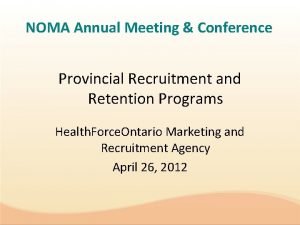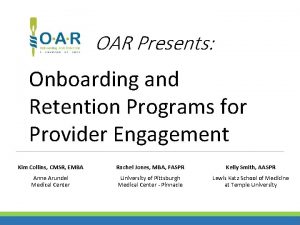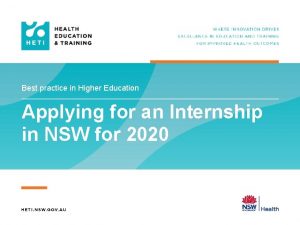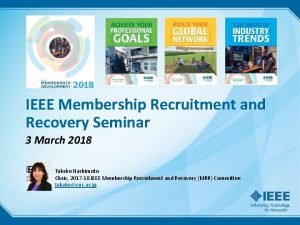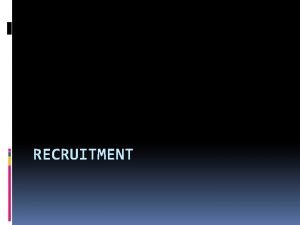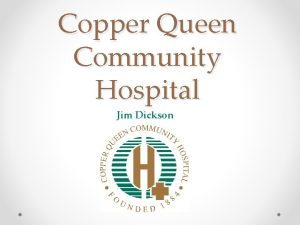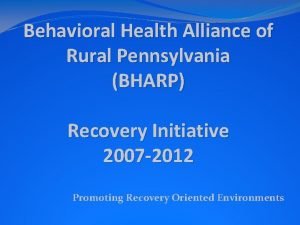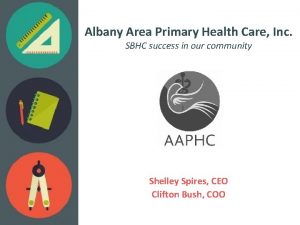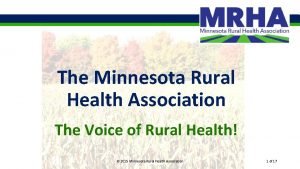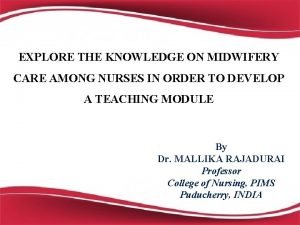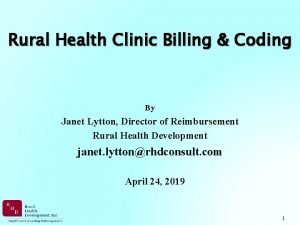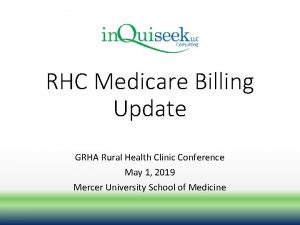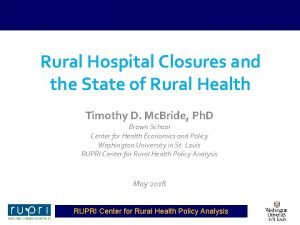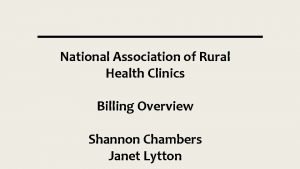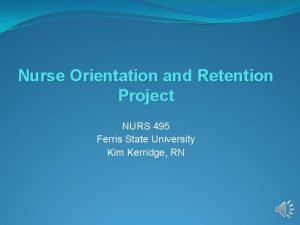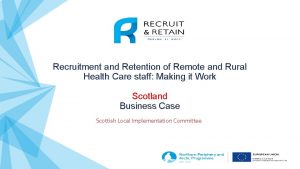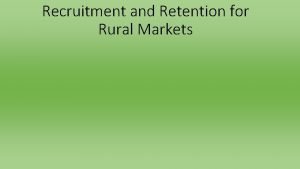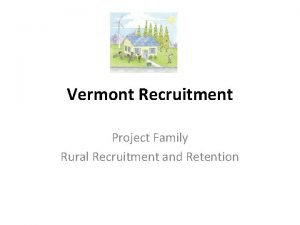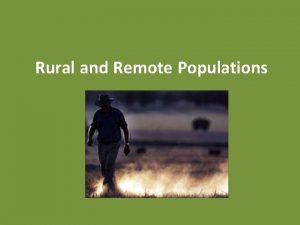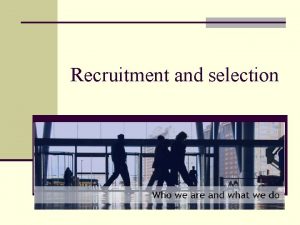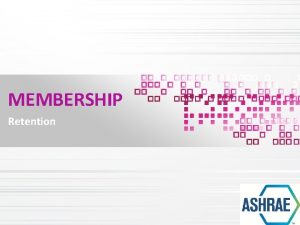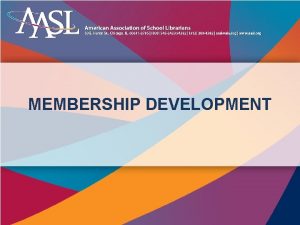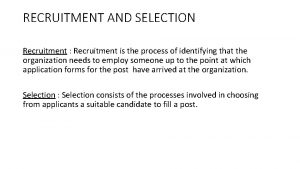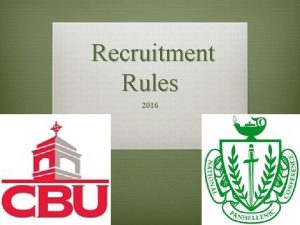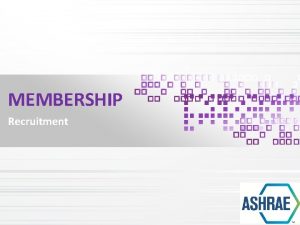Recruitment and Retention of Remote and Rural Health



















- Slides: 19

Recruitment and Retention of Remote and Rural Health Care staff: Making it Work Norway Business Case Birgit Abelsen and Helen Brandstorp, Norwegian Centre of Rural Medicine, Ui. T The Arctic University of Norway

Introduction Norway • 2016: 5. 2 mill. inhabitants • 13. 4 percent immigrants • stable economy • health status among the best in the world • key strengths: • health care services for all based on need (regardless of gender, ethnicity, personal income, residency) • local and regional accountability, public commitment, and political interest in having a good health care system in all parts of the country

The Norwegian health care system Tromsø • 426 municipalities responsible for primary health care • GP list patient system from 2001 • GPs act as gatekeepers to • Specialized health care • Sick leaves • Prescriptions • 4 regional health authorities responsible for specialized health care Population density map of Norway

Background • Why has the project been proposed?

Background • What problem has been indentified to prompt the project? • Many rural municipalities have been struggling for years to recruit and retain GPs • Short term (foreign) locums and low quality health care for the population • National level policies to attract GPs to rural areas are lacking • Municipalities is largely responsible for finding ways to recruit and retain GPs within the limits of their budgets and creativity • There is no quick fix – but what can they do?

Three self recruited munizipalities Open invitation on our web site Meløy Årdal Odda Requirements: • local motivation • Involvement from the top (municipal chief officer)

Meløy • Population (2016): 6. 471 inhabitants in three main locations • Decrease last 10 years : 2. 8 % • Total area: 873. 89 km 2 • Glaciers, waterfalls, and energy -> producing fertilizers Fishery, fish farming, and tourism • No train station • Airport 2. 5 h. drive to large regional centre Bodø (hospital) • 7 GP positions, 3 unstable in 2015

Odda • Population (2016): 6. 930 inhabitants in three main locations • Decrease last 10 years : 1. 2 % • Total area 1, 615. 89 km 2 • Glaciers, waterfalls and energy -> heavy industry (smelter was closed 2003). Tourism. • Small hospital! • No train station • Airport 3 h. drive from large regional centre Bergen • 7 GP positions, 2 unstable in 2015

Årdal • Population (2016): 5, 359 inhabitants • Two main centres • Decrease last 10 years: 3. 6% • Total area: 976. 58 km 2 • High mountains, waterfall -> aluminium plant. Tourism. • No train station • Airport 2. 45 h. drive to regional centre Førde (hospital) • 5 GP positions, 2 unstable in 2015

Aims • What is the main aim of the project? • To improve the recruitment and retention of GPs in the three rural municipalities • Describe and disseminate local strategies and solutions to other rural municipalities/settings • In what ways is this project specifically contributing to overall aim of RR 2: MIW (i. e. improving recruitment and retention in the NPA)? • Local solutions based on local ways of thinking and working (local logics) • Specific solutions concerning GPs

Outputs • What are the outputs for the project? • The project period is quite short (3 years) • Probably too short to observe major changes • The main realistic output from the project would be the establishment and documentation of systematic local GP recruitment and retention processes based in scientific knowledge about what works. • What indicators will you use to determine if outputs have been achieved? • • The number of recruited GPs during the project period The number of applicants to GP positions during the project period The number of qualified applicants for the GP positions The duration of GP contracts

Recruit and retain business model STEP 0: Organizing for tomorrow - bringing the GP service up to date STEP 1: ‘Yearly Wheel Culture’ STEP 2: ‘Who Are You Looking For? ’ STEP 3 : ‘Information, information, Information’ STEP 4 : ‘Get Your Community Engaged’ STEP 5 : ‘Support Your Staff and Their Families’ STEP 6 : ‘You Need Well Educated and Trained Staff’ STEP 7 : ‘Find the Money’

Benefits/Limitations • What are the benefits of the project? • • Improved patient care Improved working conditions for the GPs Improved working conditions for allied health personnel inthe GP practices Improved relations between the GPpractices and the municipality administration • How will these be quantified? • Difficult to quantify financially • Could be quantified as improved satisfaction • What are the possible limitations of the project? • Conditions in the GP-market (e. g. available GPs) • Economic situation in the case municipalities • Personnel situation in the municipality administrations • A well functioning GP service is of large importance. The benefit of doing something compared to doing nothing might be enormous for individuals.

Finance • There are no initial cost out-lays for the municipalities. • The project would definitely be value for money if the municipalities succeed in improved GP recruitment and retention, and if successful strategies are identified and spread to other municipalities. • If successful, there are long term cost savings • reduced employment costs (less short term locumplacements) • reduced patients “costs” caused by reduced GP turnover

Resources The Norwegian Project Team Birgit Abelsen Project leader Helen Brandstorp Team member Margrete Gaski Team member Frank Remman Administrator

Approach • We visited all three case municipalities at inclusion • Updated knowledge about todays’ GPs (preferences) • Building trust and confidence • Each case municipality have planned and carry out their own local processes (projects) • There’s no recipe! • Local project groups and local objectives • We organized a workshop in September 2016 and will organize a follow-up workshop in the autumn of 2017 • Solutions from other municipalities • Sense of community • Updates on progress • Each case municipality is followed up closely by NCRM-team • Odda by Helen, Årdal by Margrete, and Meløy by Birgit

Approach… • If needed, we will visit each case municipality to meet with the local project groups during 2017 • National promotion of the project • NCRMs’ web site and Facebook • Visible in NCRMs’ yearly report • Presentation at NCRMs 10 year anniversary in June 2017 • Other relevant related initiatives • ALIS-Vest


Thank you for your attention! www. nsdm. no
 Hfojobs
Hfojobs Building a recruitment and retention plan
Building a recruitment and retention plan Onboarding portal upmc
Onboarding portal upmc Heti internship
Heti internship Recruitment retention recovery
Recruitment retention recovery What is recuritment
What is recuritment Palominas rural clinic
Palominas rural clinic Bharp
Bharp Albany area primary health care dental
Albany area primary health care dental Minnesota rural health association
Minnesota rural health association Rural health care
Rural health care National rural health mission
National rural health mission Rural health clinic coding
Rural health clinic coding Medicare rural health clinic billing
Medicare rural health clinic billing Rural health
Rural health National association of rural health clinics
National association of rural health clinics Centre for remote health
Centre for remote health Health and social care component 3
Health and social care component 3 Insulin and sodium retention
Insulin and sodium retention Ferris orientation
Ferris orientation
